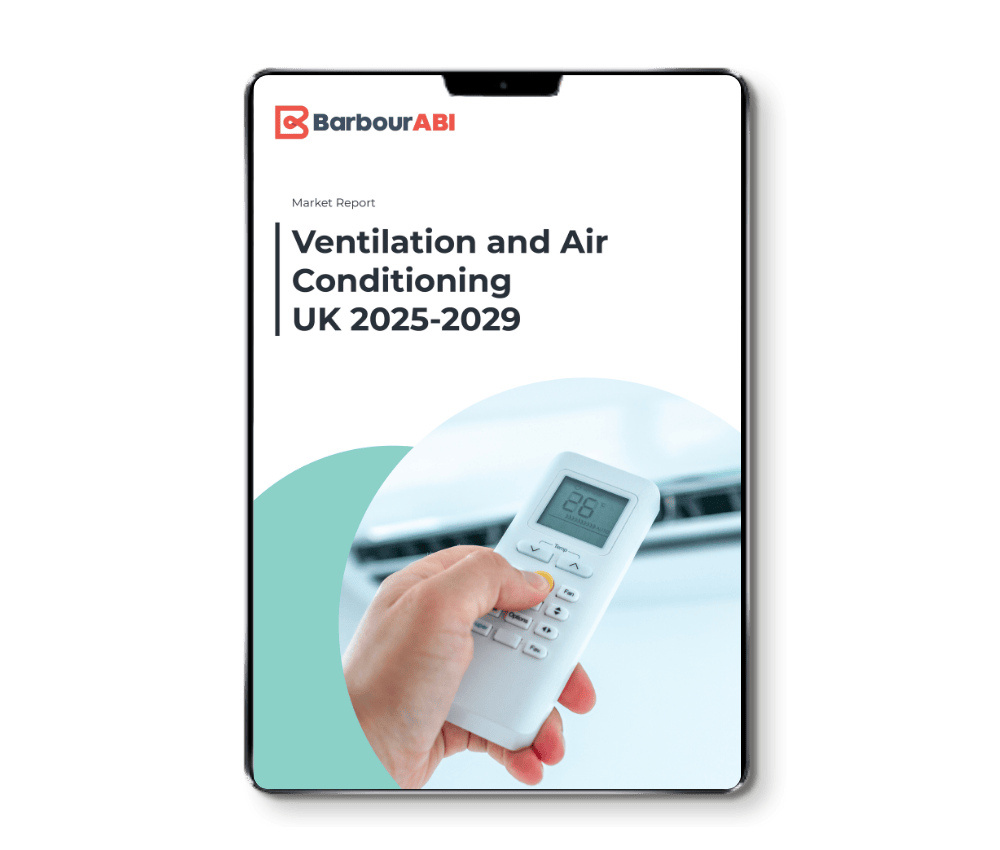While much of the UK construction sector continues to grapple with weak housing output and tight margins, the ventilation and air conditioning (VAC) industry is evolving in ways that few outside the sector fully appreciate. Regulation, air quality, and energy efficiency are now driving a quiet but fundamental transformation – and one of the biggest beneficiaries is the data centre cooling market.
Building Regulations Parts F, L, and O, together with the forthcoming Future Homes Standard, have moved ventilation and cooling to the forefront of building design and operation. As the built environment becomes more airtight to meet energy performance targets, effective air exchange, filtration, and temperature management are not just desirable – they’re essential for both compliance and occupant wellbeing.
But beyond homes and offices, this regulatory and environmental focus is rippling into the world of data centres, where air handling and cooling performance are critical to operational reliability. The exponential growth of cloud computing, AI infrastructure, and edge processing is fuelling demand for high-capacity, energy-efficient cooling systems that can meet the UK’s increasingly strict efficiency and carbon standards.
Data centres: The New Frontier of High Performance Cooling
Data centres already account for one of the fastest-growing segments within the UK non-residential ventilation and air conditioning market. These facilities consume vast amounts of energy – as much as 30–40% of total operational load goes to cooling. The latest Barbour ABI report, Ventilation and Air Conditioning UK Market 2025–2029, identifies investment in data-driven, mission-critical environments as a key growth driver for advanced cooling technologies.
To maintain uptime while meeting net zero commitments, operators are turning to hybrid and free-cooling chillers, precision air handling units (AHUs), and liquid cooling systems. Many of these solutions now integrate heat recovery and variable-speed control to improve system efficiency and reduce overall lifecycle costs. The emphasis has shifted from simply keeping IT equipment cool to optimising total facility performance.
This technical evolution mirrors the broader shift across the UK VAC sector – from volume-driven product supply to performance-led system integration.
Regulation as a Catalyst, not a Constraint
The tightening of building regulations has, in effect, redefined the competitive landscape. Compliance has become a value proposition in itself, pushing manufacturers and specifiers toward higher-performance systems that blend comfort, health, and sustainability. In the data centre context, this means adopting low-GWP refrigerants, energy-efficient fan technologies, and smarter monitoring systems that track environmental conditions in real time.
This alignment of policy and technology is helping UK manufacturers and suppliers position themselves for export and partnership opportunities across Europe, where similar efficiency and carbon frameworks are being implemented.
From Air Quality to Energy Quality
Perhaps the most striking trend identified in our analysis is the convergence between air quality and energy performance. For data centres, maintaining optimal airflow and filtration has become integral not just to hardware protection but also to sustainability credentials. Innovations in demand-controlled ventilation, high-grade filtration, and thermal energy reuse are bridging the gap between environmental responsibility and operational performance.
“The UK ventilation and air conditioning market continues to show steady resilience despite a subdued construction environment. Growth in 2025 is being sustained by tightening building regulations, the shift toward low-carbon technologies, and the increasing focus on healthy indoor environments.
While the residential sector remains constrained by weak RMI activity and a flat housing market, demand from non-residential projects—particularly in data centres, healthcare, and education—is helping to maintain market stability. Over the medium term, the introduction of the Future Homes Standard and wider sustainability targets are expected to strengthen both ventilation and cooling system uptake across the built environment.””
– Anne Williams, Editor of the report.
Ventilation and Air Conditioning UK Market Report by Barbour ABI
The Ventilation and Air Conditioning Market Report examines market structure, performance, and future prospects across the residential and non-residential sectors. The report analyses trends in market value, product segmentation, distribution, imports and exports, and the wider economic and regulatory context affecting demand.
Click below to view this report on our store website where you can see an exhaustive list of the table of contents, commentary, and more.


